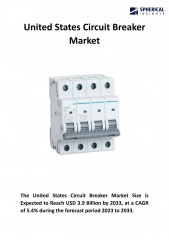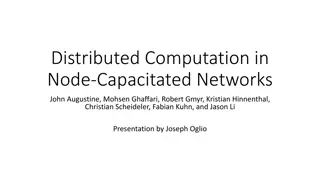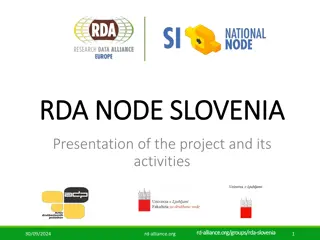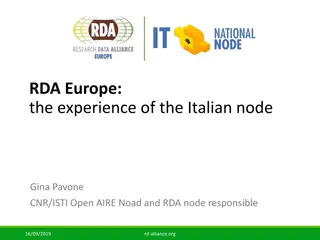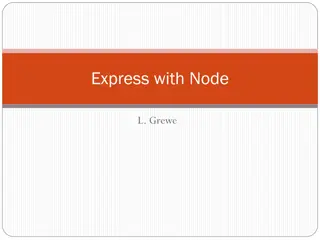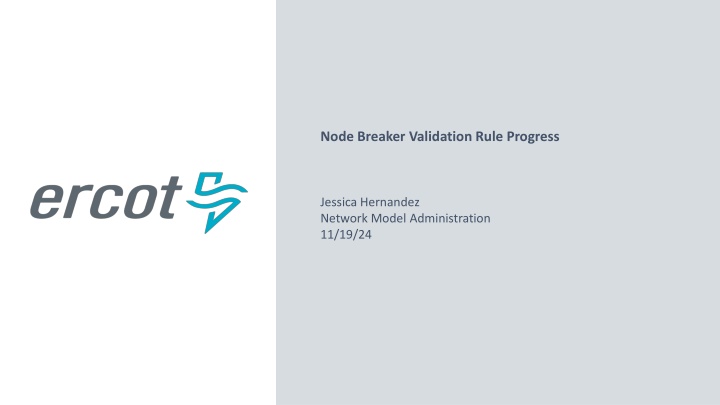
Node Breaker Validation Rule Progress and Remaining Rules Update
Discover the rationale behind adding new validation rules in the Node Breaker Validation System, including requirements for PSSEID values, range verification, and maintaining uniqueness. Explore the latest status updates on object types and remaining rules to ensure accurate data processing.
Download Presentation

Please find below an Image/Link to download the presentation.
The content on the website is provided AS IS for your information and personal use only. It may not be sold, licensed, or shared on other websites without obtaining consent from the author. If you encounter any issues during the download, it is possible that the publisher has removed the file from their server.
You are allowed to download the files provided on this website for personal or commercial use, subject to the condition that they are used lawfully. All files are the property of their respective owners.
The content on the website is provided AS IS for your information and personal use only. It may not be sold, licensed, or shared on other websites without obtaining consent from the author.
E N D
Presentation Transcript
Node Breaker Validation Rule Progress Jessica Hernandez Network Model Administration 11/19/24
Why are we adding new validation rules? Rule Type Description Steady-State Working Group (SSWG) Require Require a non-null PSSEID value. Planning models Range Verify PSSEID is within a specified numeric or alphanumeric range. Transitioned from bus-branch to node breaker. Unique Verify PSSEID is unique per the object type criteria Power System Simulator for Engineering (PSSE) and Model on Demand (MOD) NMMS Data format requirements. TP Topology Processor (TP) PSSE & MOD Prevent data errors. Prevent missing topology Deconsolidating loads and shunts. SSWG Planning Models 2 PUBLIC
Node Breaker Validation Rule Status Object Type Require Range Unique All templates updated ShuntCompensator ALT Bulk update in progress - email sent out on 11/15/24 - Complete ShuntCompensator - - ShuntCompensatorALT, ShuntCompensator, and Substation Substation. ConnectivityNode Pending Pending Partially complete Breaker Pending - ConnectivityNode, Breaker, and Disconnector. Disconnector Pending - Pending One terminal - - Pending One terminal connectors. Two terminal - - Pending Two terminal connectors. 3 PUBLIC
Remaining Rules Object Type Attribute Rule Description Criteria Verify the PSSEID attribute is populated for the ConnectivityNode object type. Not blank ConnectivityNode PSSEID Unique within the substation Verify the PSSEID is unique for all ConnectivityNode within the substation. Breaker PSSEID Verify the PSSEID attribute is populated for the Breaker object type. Not blank Disconnector PSSEID Verify the PSSEID attribute is populated for the Disconnector object type. Not blank Unique within the ConnectivityNodeGroup Synchronous Machine Verify the PSSEID is unique for SynchronousMachine object types within the ConnectivityNodeGroup. PSSEID CustomerLoad NonConformLoad Verify the PSSEID is unique for Load object types that are under the same connectivityNodeGroup. Unique within the ConnectivityNodeGroup PSSEID Verify the PSSEID is unique for devices of the same equipment type under the same connectivityNodeGroup. Unique within the ConnectivityNodeGroup Fixed Shunt PSSEID Switch Shunt SVC Verify the PSSEID is unique for devices of these equipment type under the same connectivityNodeGroup. Unique within the ConnectivityNodeGroup PSSEID ACLineSegment SeriesCompensator Breaker Disconnector Verify the PSSEID is unique for object types that are in parallel i.e., if more than one (1) of these object types connects to the same two (2) connectivityNodeGroups. Unique PSSEIDs for object types in parallel PSSEID 4 PUBLIC
Questions? 5 PUBLIC

